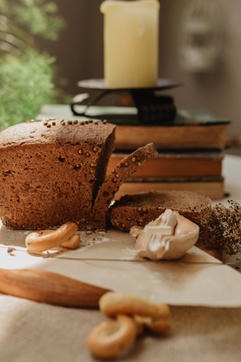Real Food. Real People.
Learn how to store fresh bread in the summer with expert tips from Great Harvest of Newtonville, MA. Keep your whole grain bread fresh longer!

Summer's heat and humidity can turn your perfectly fresh whole grain bread stale or moldy within days. Traditional bread storage methods often fall short when temperatures soar and moisture fills the air. Learning how to store fresh bread in the summer can mean enjoying that artisan loaf for a week versus tossing it after two days. The key lies in adapting your storage approach to combat the seasonal challenges that threaten your bread's freshness and flavor.
Experience the difference of fresh-milled whole grain bread that's worth storing properly! At Great Harvest of Newtonville, MA, we bake from scratch daily using the finest ingredients. Call us at (617) 928-1162 to place your order and taste why our bread stays fresher longer than store-bought alternatives!
What Is Proper Summer Bread Storage and What Does It Cover?
Proper summer bread storage involves protecting your bread from the three main enemies of freshness: heat, humidity, and air exposure. During warmer months, these factors accelerate staling and create ideal conditions for mold growth, making standard storage methods inadequate.
- Temperature control - Finding the coolest, most stable environment in your home
- Moisture management - Balancing humidity to prevent both drying out and mold growth
- Air circulation - Allowing proper ventilation while preventing excessive exposure
- Container selection - Choosing materials that regulate moisture without trapping condensation
- Timing considerations - Understanding how long different storage methods preserve freshness
Effective summer storage extends your bread's life while maintaining its texture and flavor profile.
Room Temperature vs. Refrigerated Storage
Understanding when to use each method helps you make the right choice for your specific situation and bread type.
Room Temperature Storage Benefits:
- Maintains optimal texture and prevents refrigerator staleness
- Preserves natural moisture content and crumb structure
- Allows easy access for daily consumption
- Works well for bread consumed within 2-3 days
- Keeps crust crispy on artisan loaves
Refrigerated Storage Benefits:
- Significantly slows mold growth in humid conditions
- Extends storage life up to one week
- Prevents insect attraction during peak summer months
- Maintains food safety in extremely hot climates
- Better option for pre-sliced whole grain varieties
The key difference lies in your consumption timeline and local climate conditions. Room temperature works best for quick consumption, while refrigeration becomes necessary when humidity exceeds 60% or temperatures consistently reach above 80°F. However, refrigerated bread requires brief warming or toasting to restore optimal texture before eating.
Beat the summer heat with bread that's crafted to last! Our artisan loaves at Great Harvest of Newtonville, MA are made with traditional methods that create superior texture and flavor. Call us at (617) 928-1162 to order your perfect summer bread and discover the Great Harvest difference!
Why You Need Both Short-Term and Long-Term Storage Methods
Consider a typical summer week: You buy fresh bread on Monday, planning to finish it by Friday. Days one through three call for room-temperature storage in a bread box or paper bag, maintaining texture while the bread remains at peak freshness. But when unexpected plans arise and you won't finish the loaf as quickly, transitioning to refrigerated storage on day four prevents waste and maintains quality.
This dual approach maximizes quality and longevity, giving you flexibility based on changing consumption patterns and unpredictable weather conditions throughout the season. Smart storage timing also saves money by reducing the frequency of bread purchases. Many families find that switching between methods mid-week allows them to enjoy optimal texture when consuming bread fresh, while extending usability when consumption slows down, creating the perfect balance between convenience and quality preservation.
Common Misconceptions About Summer Bread Storage
Many people believe plastic bags provide the best protection, but they trap moisture and accelerate mold growth in humid conditions. Paper bags or bread boxes offer better ventilation while protecting from air exposure.
Another misconception suggests freezing immediately upon purchase, which isn't necessary for bread you'll consume within a week. Fresh bread maintains better texture when stored properly at room temperature initially, then moved to cooler storage only when needed.
Some assume all breads store identically, but whole grain varieties handle humidity better than white breads due to their natural fiber content and denser structure.
In Conclusion
The difference between room-temperature and refrigerated storage is due to timing, climate, and consumption patterns. Understanding these factors helps you choose the right method for each situation. Proper summer bread storage isn't about following one rigid rule—it's about adapting your approach to maximize freshness while preventing waste during challenging weather conditions.
Ready for bread that stays delicious all week long? Visit Great Harvest of Newtonville, MA for fresh-milled, handcrafted loaves that are worth storing properly. Call us at (617) 928-1162 to place your order or stop by to see our full selection of wholesome bread options!

Great Harvest Bread of Newtonville
We'd love to be in touch with you

